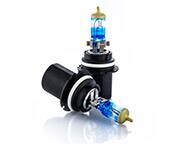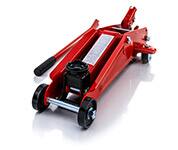Unlock Your Potential How Aviator Can Transform Your Flying Experience
- Unlock Your Potential: How Aviator Can Transform Your Flying Experience
- The Essential Features of Aviator Applications
- Flight Planning Tools
- Weather Integration
- Navigation Tools
- Advantages of Using an Aviator Application
- Improved Flight Safety
- Operational Efficiency
- Community and Networking
- Making the Transition to Digital Tools
- Assessing Your Needs
- Learning the Fundamentals
- Embracing the Change
- The Future of Aviation Technology
- Integration of AI in Aviation
- Improved Connectivity
- Predictive Weather Analytics
Unlock Your Potential: How Aviator Can Transform Your Flying Experience
Flying has always held a sense of wonder and adventure, capturing the imagination of generations. With the development of technology, the ability to take to the skies has become more accessible to the general public. One of the pivotal tools that have emerged in the aviation world is the use of applications and platforms that streamline the flying experience. Among these, the concept of an aviator application stands out as a revolutionary force that can significantly enhance how pilots and flying enthusiasts navigate their journeys. The potential to unlock vital features that improve safety, efficiency, and enjoyment in flying makes such applications essential in today’s aviation landscape.
This article aims to delve into the transformative power of the aviator experience, exploring how these tools can bridge the gap between novice and experienced pilots. With features ranging from flight planning to real-time weather updates, these applications are designed to cater to a variety of preferences and skill levels in aviation. The world of flying is evolving, and aviator applications are at the forefront of this revolution, making flying not just a means of transport but also a thrilling adventure that empowers users.
As we unfold the layers of the aviator experience, we will uncover insights into various features, benefits, and the impact of these applications on both personal and professional flying. Whether you are a student pilot or a seasoned veteran, the right aviator tool can redefine your journeys, making each flight more productive, enjoyable, and safe. Join us as we explore the detailed facets of transition to the digital age of aviation, where the traditional aviator takes on a new, modern form.
Get ready to unlock your potential in the sky, as we begin our exploration into how aviator applications can transform your flying experience. Together, we will navigate through the essential features, advantages of using these tools, and how they can enhance flight safety and efficiency. Whether in a cockpit or a flight simulator, an aviator app equips you with the necessary information and tools to soar to new heights.
The Essential Features of Aviator Applications
Modern aviator applications come equipped with a variety of features that cater to both novice and experienced pilots. These features include flight tracking, weather updates, and navigation tools. Flight tracking allows pilots to monitor their flights in real-time, ensuring they stay informed about any changes in their route or conditions. Weather updates serve a crucial role in informing pilots about potential weather-related challenges, enhancing decision-making processes during flights. Lastly, navigation tools provide pilots with necessary aeronautical charts and guidance, ensuring safer and efficient travel.
Let’s delve deeper into some of the primary features of aviator applications and what they can offer to pilots:
FeatureDescription
| Flight Planning | Enables users to plan routes efficiently, optimizing flight paths. |
| Real-Time Weather Updates | Provides up-to-date weather information for informed decision-making. |
| Navigation Aids | Includes maps and charts for accurate navigation and situational awareness. |
| Flight Tracking | Allows monitoring of flight paths and adherence to plans. |
Flight Planning Tools
Successful flying begins with robust flight planning. Aviator applications streamline this process by allowing pilots to input crucial data such as departure and arrival airports, flight duration, and aircraft specifications. The application will generate recommendations based on this data, ensuring that every aspect of the flight is properly accounted for. With the integration of aeronautical databases, pilots can easily access the latest updates on airspace restrictions and available routes.
The benefits of using flight planning tools go beyond just entering data. They significantly reduce the chances of human error while enhancing the overall efficiency of the flight. By utilizing these tools, pilots can also save time and reduce stress before their flights, allowing them to focus on what truly matters: a safe journey through the skies.
Weather Integration
Weather conditions can change rapidly during flight, making real-time weather updates an invaluable feature in aviator applications. By having access to live data and forecasts, pilots can make informed decisions regarding their flight plans. For instance, if a sudden storm develops along a route, the application can suggest alternative paths to avoid hazardous conditions. This capability significantly increases safety during flight operations.
Moreover, these weather updates can be customized based on the pilot’s preferences. This means that, aside from basic forecasts, features can include detailed wind direction, turbulence reports, and visibility conditions. Access to such information helps in planning contingencies and contributing to the efficacy of flight operations.
Navigation Tools
Navigation is a fundamental aspect of piloting, thus aviator applications come equipped with advanced navigation tools that aid in precise route adherence. These tools feature updated aeronautical charts that provide crucial information about runways, airways, and navigation aids. Knowing how to utilize these features increases the level of situational awareness, which is essential during all phases of flight.
Furthermore, pilots can optimize their routes, ensuring that they are flying efficiently and legally within the designated airspace. By incorporating navigation tools into their flying routine, pilots can reduce their workload while enhancing their overall flying experience. The ability to visualize flight paths leads to better decision-making and positioning during flight.
Advantages of Using an Aviator Application
Utilizing an aviator application comes with an array of advantages that streamline flying experiences. From enhancing safety to improving operational efficiency, these applications present a plethora of benefits valuable to users. In an industry where precision and safety are paramount, leveraging technology elevates the overall flying experience.
Another prominent advantage includes the ability to access a wealth of aviation knowledge and community support. Aviator applications often foster a community where users can share experiences, which is beneficial for learning and networking. Additionally, users can gain access to educational resources and training materials tailored to their needs.
- Enhanced Safety: Improved real-time information leads to safer flying.
- Operational Efficiency: Optimized flight plans eliminate unnecessary delays.
- Community Engagement: Networking with fellow pilots fosters valuable relationships.
Improved Flight Safety
One of the most significant advantages of utilizing aviator applications is the enhancement of flight safety. With access to extensive data, pilots can significantly reduce risks during flights. For instance, real-time weather updates allow pilots to avoid severe conditions, while flight tracking helps in adherence to flight plans, minimizing the chances of entering restricted airspace.
Additionally, features like alerts and notifications improve safety by keeping pilots informed about updates related to their flight paths. These tools work collaboratively to ensure that emergency protocols can be initiated promptly if necessary. With aviator applications, pilots have a higher degree of control, leading to a more secure flying environment.
Operational Efficiency
Efficiency is crucial in aviation, and using an aviator application directly contributes to operational productivity. By streamlining flight planning, pilots can save substantial time, allowing for a focus on flying rather than administrative duties. Moreover, operational efficiency impacts overall flight costs, which is particularly important in a commercial setting.
As pilots utilize these applications, they gain insights into better fuel consumption and time management strategies. Knowing when to replace fuel or make necessary adjustments also contributes to overall operational savings. Thus, aviator applications prove invaluable for pilots looking to make the most of their time in the sky.
Community and Networking
In the aviation industry, networking is as important as skill and knowledge. Aviator applications often incorporate community features that connect users, allowing them to share experiences, stories, and tips for effective flying. This network of pilots fosters relationships that can enhance learning, collaboration, and mutual support.
Participating in community forums or groups accessible through aviator applications not only promotes learning but also builds a sense of camaraderie among pilots. Sharing insights and experiences can lead to best practices that benefit everyone involved, ultimately contributing to a more knowledgeable aviation community.
Making the Transition to Digital Tools
Adapting to new technologies can sometimes be daunting, especially for those deeply rooted in traditional methods of flying. However, transitioning to digital tools like aviator applications is crucial for enhancing the flying experience. Embracing technology means equipping oneself with advanced features that can save time and improve overall productivity.
One of the keys to a smooth transition is thorough training and understanding. By attending instructional webinars or tutorials, pilots can familiarize themselves with the application’s functionalities. Ultimately, this transition is not just about changing tools, but also about embracing a new mindset that values efficiency, safety, and connectivity.
- Assess Your Needs: Determine what features will be most beneficial to your flying experience.
- Learn the Fundamentals: Engage in training sessions to understand how to fully utilize the application.
- Embrace the Change: Integrate your new tools into flying practices gradually.
Assessing Your Needs
The first step in transitioning to a digital tool is to assess your needs as a pilot. Are you a private pilot looking for tools to enhance your hobby, or are you a commercial pilot aiming to streamline operations? Understanding your needs will guide you in selecting the right aviator application that fits your flying style and objectives.
Engaging with fellow pilots or instructors about their experiences with various applications can also clarify your decision-making process. Take the time to explore different applications on the market to ensure that you select one that aligns with your aviation goals.
Learning the Fundamentals
Once a suitable application is chosen, the next crucial step is to learn the fundamentals of the tool. Most top aviator applications come with tutorial videos or help sections that guide users through their features. Additionally, many platforms operate forums where experienced users share tips and troubleshoot issues.
Consistency is key; by dedicating some time each week to develop your skills with the application, you will become proficient in no time. Familiarizing yourself with new technology is an investment in your flying future.
Embracing the Change
Transitioning to a digital aviator application may come with some resistance initially, as many pilots are accustomed to traditional methods. However, embracing this change is essential for staying relevant and competitive in the evolving aviation landscape. Gradually integrate the application into your everyday flying practice, ensuring that you do not feel overwhelmed.
Over time, you will discover the benefits of these tools and how they truly transform your flying experience. Being open to innovation denotes a commitment to maximizing the potential of your aviation journey.
The Future of Aviation Technology
The landscape of aviation technology is constantly evolving, and aviator applications are leading the charge into this new era. With ongoing advancements in software and smartphone technology, we can expect to see even more sophisticated features in the future. New trends such as AI integration, enhanced connectivity with air traffic control, and predictive analytics for weather patterns will significantly improve the overall flying experience.
Moreover, as more pilots adopt these tools, there will be a greater emphasis on shared experiences and collective innovation. Companies developing aviator applications are continuously seeking user feedback to improve their offerings. The future holds immense potential for aviation as it adopts a collaborative approach to safety and technology integration.
Integration of AI in Aviation
The integration of artificial intelligence (AI) in aviation technology will revolutionize the industry. From automated flight management systems to real-time predictive analysis of weather conditions, AI has the potential to transform how pilots approach flying and navigation. By analyzing vast amounts of data, AI systems can offer recommendations, minimize risks, and improve overall operational efficiency.
The advent of AI will enable pilots to make quicker decisions, enhancing safety protocols and reducing the workload associated with flight management. As we look toward the future, AI’s role in aviation promises to be game-changing.
Improved Connectivity
As technology progresses, the importance of connectivity becomes even more apparent. Future aviator applications are likely to incorporate advanced communication tools that facilitate better dialogues between pilots and air traffic control. By improving communication, we can expect to see an increase in the efficiency of flight operations and enhanced safety.
Enhanced connectivity features can also lead to the development of collaborative flight planning where pilots share crucial input and data regarding their flying experiences. A shared platform for information exchange will strengthen the aviation community as a whole.
Predictive Weather Analytics
One of the most essential aspects of aviation is weather, and predictive weather analytics provide a robust framework for pilots to comprehend changing conditions. Future advancements in predictive analytics will offer a deeper insight into potential weather patterns, enabling better decision-making by pilots. By foreseeing weather-related challenges, pilots can approach their flights with enhanced preparedness.
The union of these advanced features solidifies the role of aviator applications as indispensable tools for future pilots. As technology advances, the bond between pilots and their tools will only strengthen, leading to an exciting aviation future.
In conclusion, the shift towards utilizing aviator applications is a significant leap forward in enhancing the flying experience. With features that improve safety, operational efficiency, and access to community support, these tools are changing the landscape of aviation for both amateur and professional pilots alike. As we embrace technology’s evolving role in aviation, pilots can unlock their potential and embark on journeys that promise adventure and fulfillment in the skies.


























